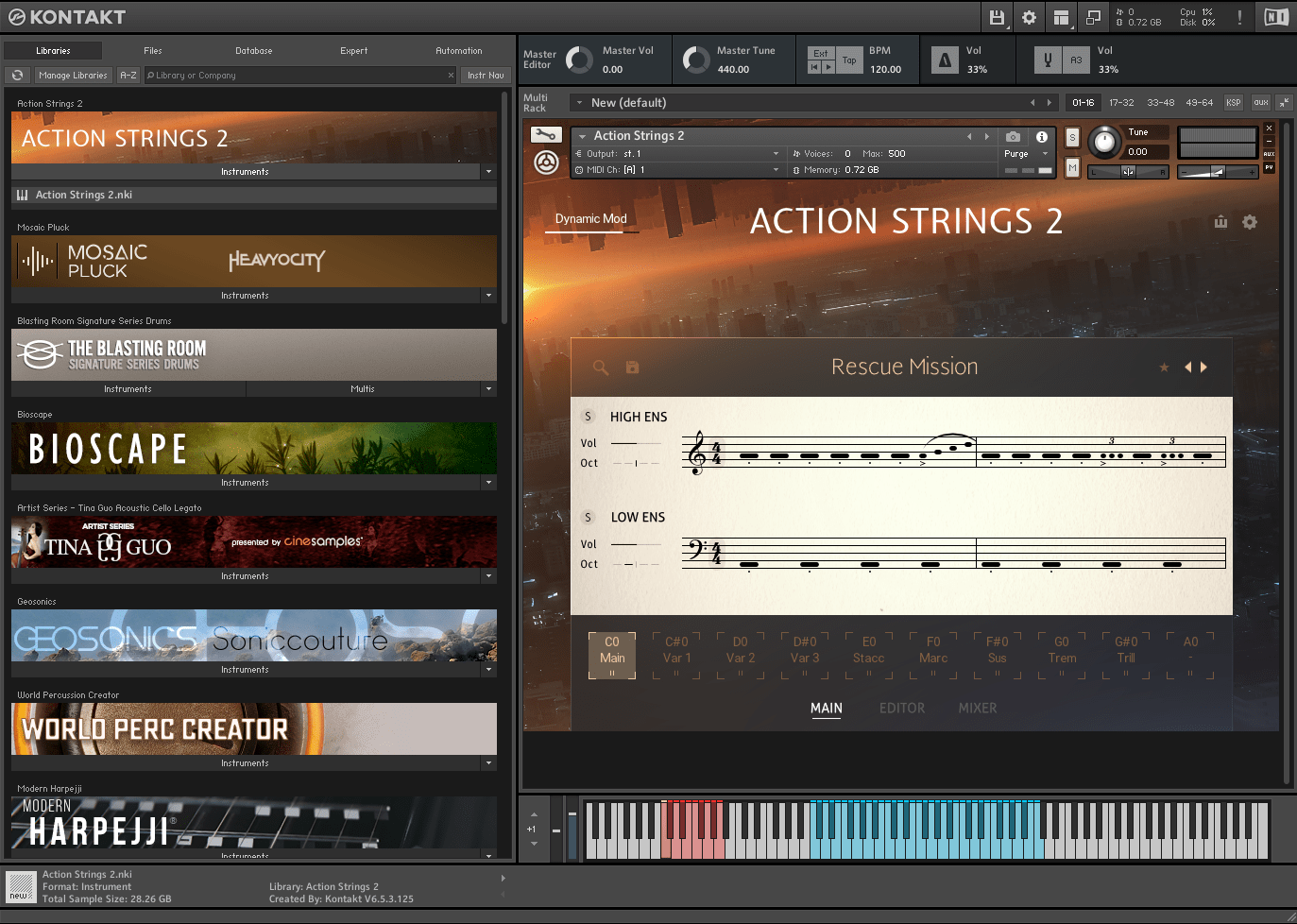

These are also pre-assigned to keyswitches C0 to F0 - this convention is (laudably) consistent across all keyswitchable instruments. The ‘All Articulations’ patches add buttons for selecting articulations. An EQ with low- and high-boost/cut and a convolution reverb with a choice of 10 impulses and a reverb mix knob are all there is to play with. Instrument patches are very simple: no envelopes, no filters, in fact no clever scripting at all. The final item at the Instrument tab’s root level is a patch simply named ‘The Orchestra’, which will be covered in detail later, for it’s here that the magic of this library lies. You’re unlikely to render convincing versions of Mozart’s Requiem or Carmina Burana with the Choir, but it’s a useful addition nonetheless. The Choir category is provided as a ‘bonus’, providing male and female ‘Oh’ and ‘Ah’ sustains, male and female staccatos, each with 11 different keyswitchable syllables, and a sustained ‘Elven Choir’ that morphs through the vowels ‘ooh, aah, eh and ee’. The Percussion folder contains four patches: Non-Pitched Percussion, Orchestral Harp, Timpani and Tubular Bells.

#NATIVE INSTRUMENTS ACTION STRINGS PLAYER COUNT FULL#
For a full count of instruments and their articulations, see the ‘ Full Instrument List’ box. Within these subfolders are the instrument patches: one that loads all available articulations, the remainder that load only single articulations. Violins 1, Violins 2, Violas, Celli and Basses. Strings, Brass and Woodwinds have subfolders for each instrument type in that category, eg. Under the Instruments tab are five folders representing each orchestral section: Strings, Brass, Woodwinds, Percussion and Choir. First, let’s take a look at how The Orchestra’s presets are laid out. We’ll dive into the Engine’s concept and methods in due course. The main difference is that there are no pre-recorded phrases in this library - you use the sampled instruments as raw material. What if you could make your own content? That’s what The Orchestra Engine is all about. However, the content of those phrases always remains the same. Users of phrase-based sample libraries such as the Sonokinetic range (Minimal, Tutti, Capriccio, etc) or Native Instruments’ Action Strings will be familiar with the concept: real, pre-recorded musical phrases or rhythmic patterns that conform to the chords you play on a keyboard. These instruments are presented as playable patches, but they serve a greater purpose: The Orchestra Engine. What it does manage to squeeze into that relatively small footprint are the essential components of an orchestra, with just enough articulations to cover the most commonly needed performance variations. At a mere 6GB in size that would be expecting a bit much.


It’s not a deeply sampled, highly detailed rendering of every possible articulation of every possible orchestral instrument, recorded in some swish Hollywood studio in umpteen mic positions. In fact I’ve found it quite hard to stop playing with The Orchestra and actually start writing this review.įirst off, I should explain what it is not. With a name like The Orchestra, it might be tempting to dismiss this as just yet another orchestral sample library however, that would be missing out on something quite special. Sonuscore’s new library takes an unusual and inventive approach to the sampled orchestra. Slots one and four are assigned to envelopes 1 and 2 respectively slots two, three and five are each assigned to a different arpeggiator. The main page with five articulations loaded.


 0 kommentar(er)
0 kommentar(er)
